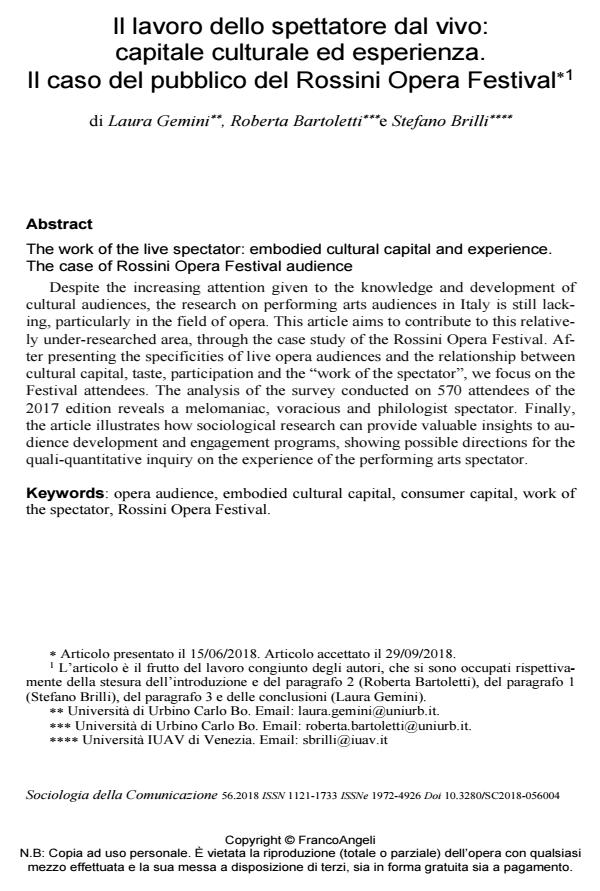The work of the live spectator: embodied cultural capital and experience.
Journal title SOCIOLOGIA DELLA COMUNICAZIONE
Author/s Laura Gemini, Roberta Bartoletti, Stefano Brilli
Publishing Year 2018 Issue 2018/56
Language Italian Pages 22 P. 43-64 File size 246 KB
DOI 10.3280/SC2018-056004
DOI is like a bar code for intellectual property: to have more infomation
click here
Below, you can see the article first page
If you want to buy this article in PDF format, you can do it, following the instructions to buy download credits

FrancoAngeli is member of Publishers International Linking Association, Inc (PILA), a not-for-profit association which run the CrossRef service enabling links to and from online scholarly content.
The case of Rossini Opera Festival audience Despite the increasing attention given to the knowledge and development of cultural audiences, the research on performing arts audiences in Italy is still lacking, particularly in the field of opera. This article aims to contribute to this relatively under-researched area, through the case study of the Rossini Opera Festival. After presenting the specificities of live opera audiences and the relationship between cultural capital, taste, participation and the "work of the spectator", we focus on the Festival attendees. The analysis of the survey conducted on 570 attendees of the 2017 edition reveals a melomaniac, voracious and philologist spectator. Finally, the article illustrates how sociological research can provide valuable insights to audience development and engagement programs, showing possible directions for the quali-quantitative inquiry on the experience of the performing arts spectator.
Keywords: Opera audience, embodied cultural capital, consumer capital, work of the spectator, Rossini Opera Festival.
Laura Gemini, Roberta Bartoletti, Stefano Brilli, Il lavoro dello spettatore dal vivo: capitale culturale ed esperienza. Il caso del pubblico del Rossini Opera Festival in "SOCIOLOGIA DELLA COMUNICAZIONE " 56/2018, pp 43-64, DOI: 10.3280/SC2018-056004